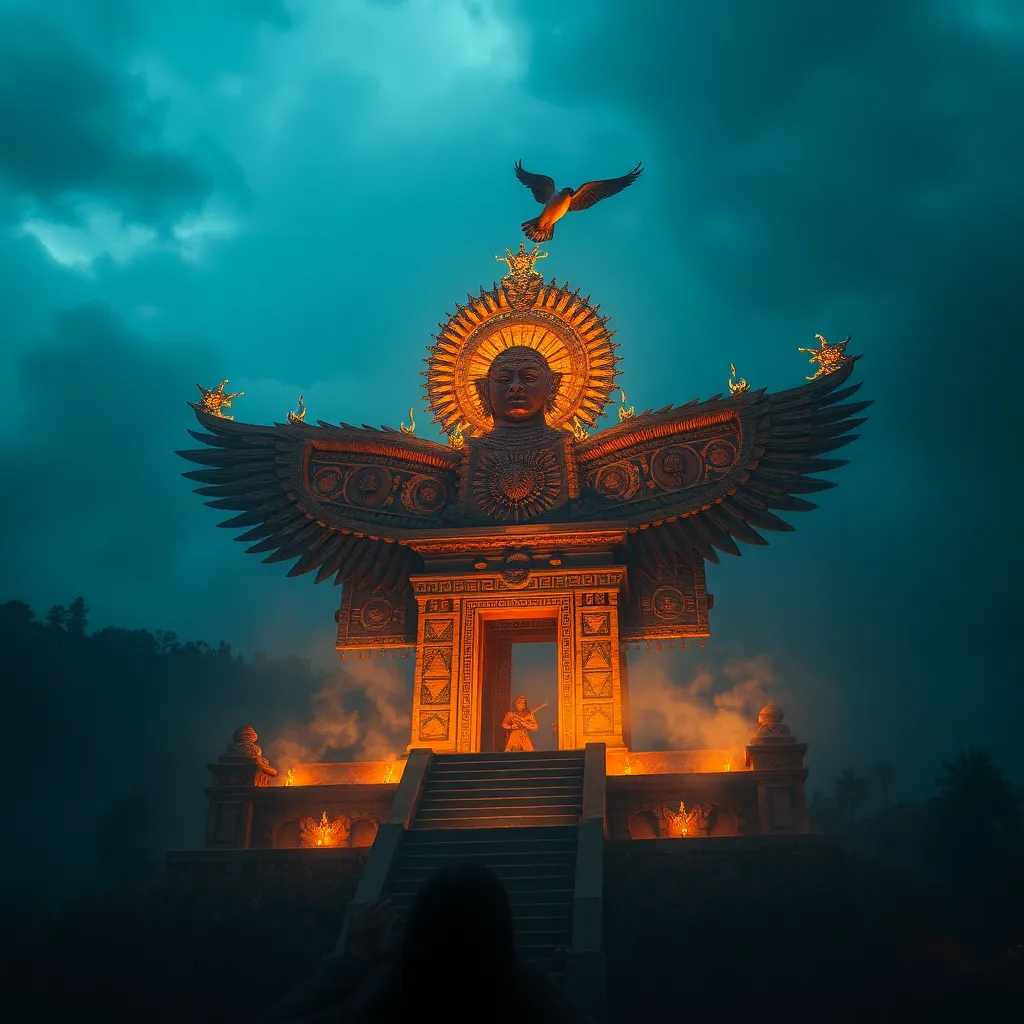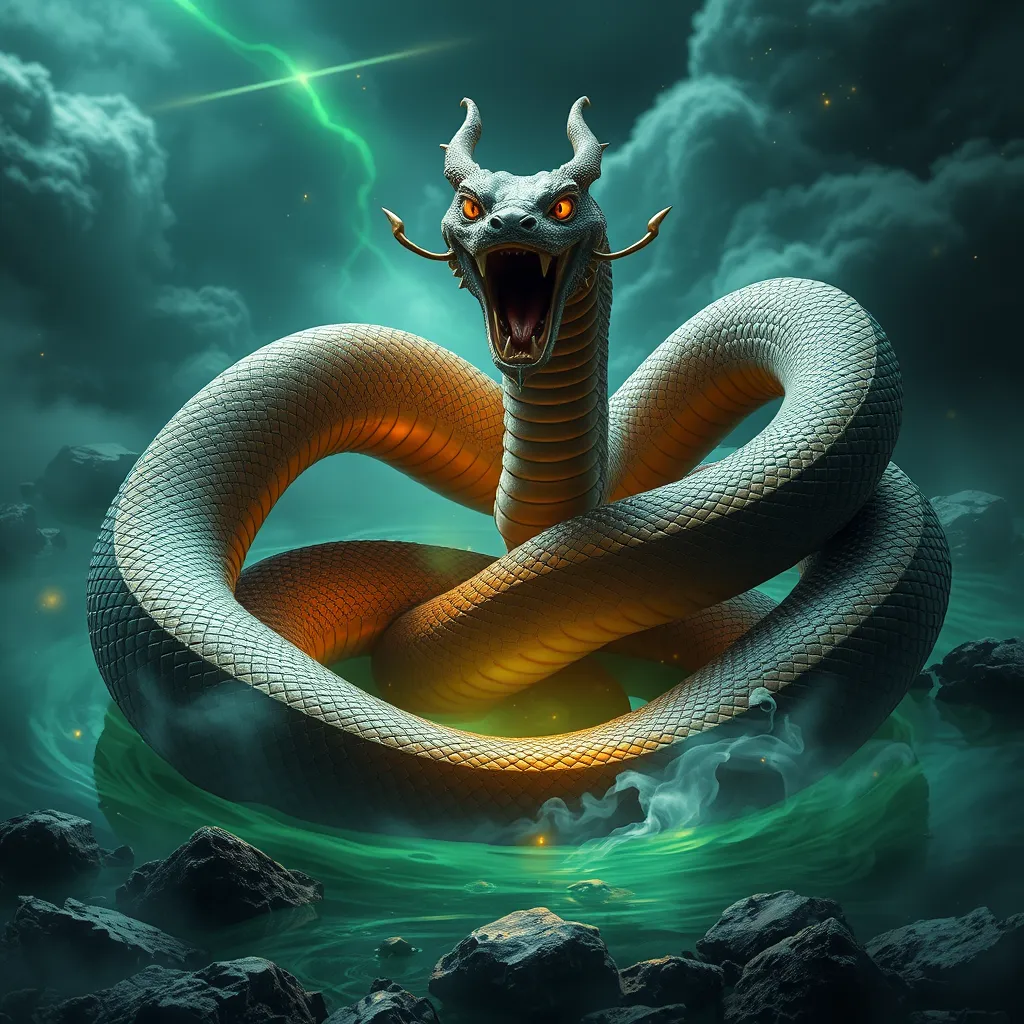Beyond the Chaos: Cipactli’s Role in Shaping the Aztec World
I. Introduction
Cipactli, a significant figure in Aztec mythology, embodies the complex relationship between chaos and creation. As a primordial creature, Cipactli is central to the Aztec creation narrative, where it plays a pivotal role in the formation of the world. This article aims to explore Cipactli’s profound influence on Aztec culture and society, illustrating how this mythological being shaped their worldview and practices.
II. The Mythological Origins of Cipactli
Cipactli is often described as a massive, monstrous creature, resembling a crocodile or dragon. It is depicted as both a source of chaos and a catalyst for order. In the Aztec cosmology, Cipactli represents the primordial chaos that existed before the world was created.
In the creation myth, Cipactli is instrumental in the establishment of the cosmos. It is said that the gods had to defeat Cipactli to create the world, symbolizing the transition from chaos to order. This duality illustrates the Aztec belief that creation is a continuous process, often emerging from disorder.
III. Cipactli in the Aztec Creation Myth
The tale of the Five Suns narrates how Cipactli’s body was used to form the earth. After being vanquished by the gods, its flesh was divided, giving rise to mountains and valleys. This act of creation emphasizes the interconnectedness of life and death in Aztec mythology.
The implications of this creation myth extend to various aspects of Aztec beliefs and practices. It underscores the importance of sacrifice, as the gods’ victory over Cipactli required immense effort and bloodshed. This theme of sacrifice is prevalent in Aztec rituals, where offerings were made to ensure the continuation of life.
IV. Cipactli and the Natural World
Cipactli’s associations with nature are profound and multifaceted. As a primordial creature, it is linked to various elements of the natural world:
- Water: Cipactli is often connected to rivers and lakes, seen as a guardian of aquatic life.
- Earth: Its transformation into the earth illustrates the connection between life and the land.
- Fertility: Cipactli is revered in agricultural practices, symbolizing abundance and growth.
This connection to agriculture is particularly significant, as the Aztecs depended on successful harvests for their survival. Consequently, rituals and ceremonies were dedicated to Cipactli to invoke fertility and ensure bountiful crops.
V. The Cultural Impact of Cipactli
Cipactli’s representation in art and literature is a testament to its cultural significance. Aztec artists often depicted Cipactli in various forms, illustrating its monstrous features and the chaos it represented. These depictions served not only as artistic expressions but also as educational tools, conveying the importance of the creation myth to the people.
As a symbol of Aztec identity, Cipactli embodies the core values of the civilization. It reflects their understanding of the world, the balance of chaos and order, and the cyclical nature of life. Furthermore, Cipactli played a role in social and political structures, as the leaders often invoked the creature’s power to legitimize their authority and decisions.
VI. Cipactli in Modern Interpretations
In recent years, there has been a resurgence of interest in Aztec mythology, with Cipactli being a focal point in contemporary discussions. This renewed fascination has led to the exploration of Cipactli’s influence on modern cultural narratives, including literature, film, and art.
Modern interpretations of Cipactli often highlight its role in the broader narrative of creation and destruction, offering insights into how ancient beliefs can resonate with contemporary issues. By examining Cipactli’s legacy, scholars and enthusiasts can better understand the complexities of Aztec heritage and its relevance today.
VII. Comparative Analysis with Other Mythological Figures
When comparing Cipactli to other creation deities in various cultures, several similarities and differences emerge:
- Similarities: Like many creation deities, Cipactli embodies the chaos that precedes creation, similar to figures in other mythologies such as Tiamat in Mesopotamian lore.
- Differences: While Tiamat is often defeated in a battle against the gods, Cipactli’s essence is transformed into the world itself, highlighting a unique aspect of Aztec cosmology.
This comparative analysis underscores the broader implications of Cipactli’s narrative, revealing how different cultures interpret the themes of creation, chaos, and order.
VIII. Conclusion
Cipactli’s multifaceted role in Aztec culture is a reflection of the civilization’s deep understanding of the interplay between chaos and creation. From its origins as a primordial creature to its influence on natural elements and cultural practices, Cipactli embodies the essence of Aztec mythology.
The lasting legacy of Cipactli is evident in modern society, where its narrative continues to inspire and inform contemporary discussions about identity and heritage. As we reflect on Cipactli’s significance, it becomes clear that the stories of the past shape our understanding of the present and future, reminding us of the profound connections between chaos and creation in mythology.



